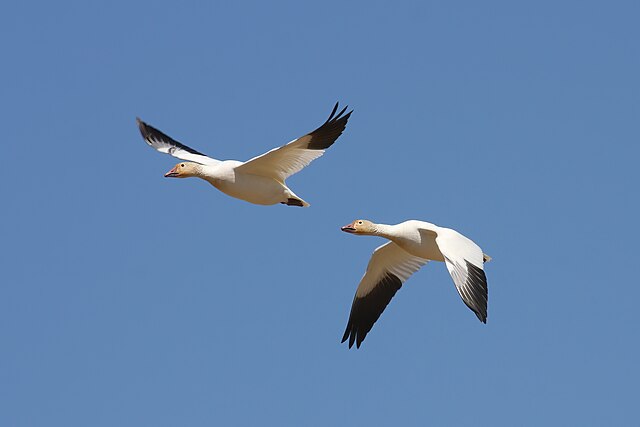The greylag goose or graylag goose is a species of large goose in the waterfowl family Anatidae and the type species of the genus Anser. It has mottled and barred grey and white plumage and an orange beak and pink legs. A large bird, it measures between 74 and 91 centimetres in length, with an average weight of 3.3 kilograms. Its distribution is widespread, with birds from the north of its range in Europe and Asia often migrating southwards to spend the winter in warmer places, although many populations are resident, even in the north. It is the ancestor of most breeds of domestic goose, having been domesticated at least as early as 1360 BCE. The genus name and specific epithet are from anser, the Latin for "goose".
Greylag goose
Head of an adult
Three domesticated hybrids of greylag geese at Koutavos Lagoon, Cephalonia, Greece.
Three eastern greylag geese (A. a. rubrirostris) at Keoladeo National Park in Rajasthan, India
A goose is a bird of any of several waterfowl species in the family Anatidae. This group comprises the genera Anser and Branta. Some members of the Tadorninae subfamily are commonly called geese, but are not considered "True Geese" taxonomically. More distantly related members of the family Anatidae are swans, most of which are larger than true geese, and ducks, which are smaller.
A greylag goose (Anser anser), with a rail in the background.
Snow geese (Anser caerulescens) in Quebec, Canada
Chinese geese (Anser cygnoides domesticus), the domesticated form of the swan goose (Anser cygnoides)
Barnacle geese (Branta leucopsis) in Naantali, Finland








